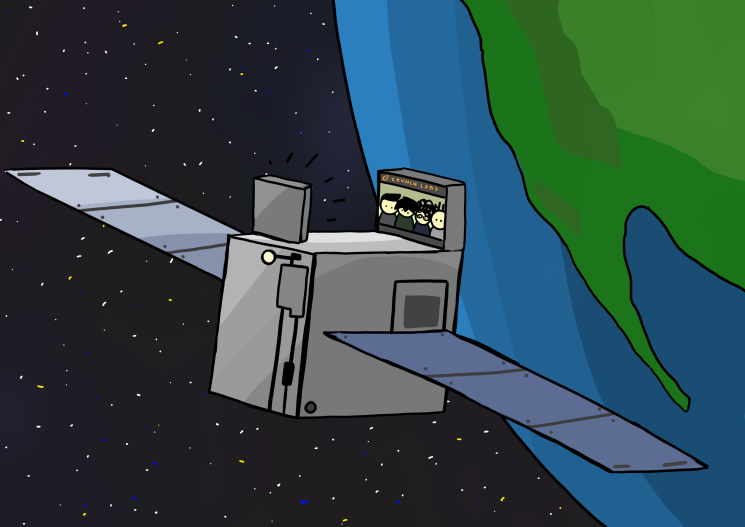
By Vaughn Bui
CrunchLabs CEO Mark Rober — former NASA engineer known for his engineering YouTube videos — has led the creation of a satellite called SatGus with the sole purpose of taking selfies. Partnering with T-Mobile and Google to build the spacecraft, Rober intends for any person to upload a picture of their choice via the CrunchLab’s website; the image will be displayed by a screen with the Earth as a backdrop. A photo will be taken, the end result being the person’s selected photo surrounded by the Earth in space!
Rober plans for SatGus to be launched into space on a SpaceX Falcon 9 Transporter 12 rideshare mission in January 2025, bringing a handful of small satellites into low Earth orbit. The launch will happen at the Vandenberg Space Force Base in Santa Barbara County, California. After reaching a stable orbit above Earth’s atmosphere, SatGus will not be operational for a few months until all systems are properly checked and working.
SatGus’s mission is the first of its kind. It gives an opportunity for the everyday person to see a specialized image from anywhere in the world. Satellites are typically reserved for research and private uses, but Rober intends for SatGus to be publicly accessible to all. It also serves to further Rober’s mission of inspiring future generations of engineers and scientists.
Surprisingly, building a spacecraft is not a new endeavor for Rober. Before making YouTube his main occupation, Rober worked at NASA’s Jet Propulsion Laboratory, constructing the Curiosity Rover that launched in November 2011 and landed on Mars in August 2012. Rober’s experiences at NASA are seen through his detailed descriptions of the design and construction process.
Rober’s video “My New Satellite Can Take Your Selfie From Space” announced that SatGus had primarily focused on the engineering and creation aspect of the project. The main purpose of building SatGus is to teach aspiring engineers and inspire young kids the process behind building a satellite. Rober also highlights the accessibility of space, accentuating the advancement of rockets and science.
“It’s incredible we live in a day and age where just an everyday civilian like you and me can just decide to build something, and send it to space,” Rober said.
The satellite’s creation process is in line with CrunchLabs’ aspirations and mission as a company that aims to inspire future generations.
CrunchLabs is a subscription program that allows any person who signs up to create machines, devices and code through tutorials and detailed breakdowns by the CrunchLabs team. When creating the company, Rober aimed to inspire young children to think creatively like engineers.
For existing members of CrunchLabs, or for those who are partnered and invited by T-Mobile or Google, a free photo with SatGus is offered. For people who aren’t members, CrunchLab instead allows you to obtain a photo in exchange for a $30 sponsor, or donation, to aspiring engineers. In all cases, a specialized code is needed to book a selfie by SatGus. Additionally, a SatGus mission patch is delivered to those who sign up for a photo, and a chance for a few lucky winners to be invited to watch the launch of the Falcon 9 on Transporter 12 in person with the CrunchLabs team.
Rober estimates an operational service life of one to three years due to the satellite’s degrading orbit around Earth. So, spots for selfies by SatGus are limited and are on a first-come-first-serve basis. For those interested in obtaining their own space selfie, pictures can be booked on CrunchLab’s SpaceSelfie website.





